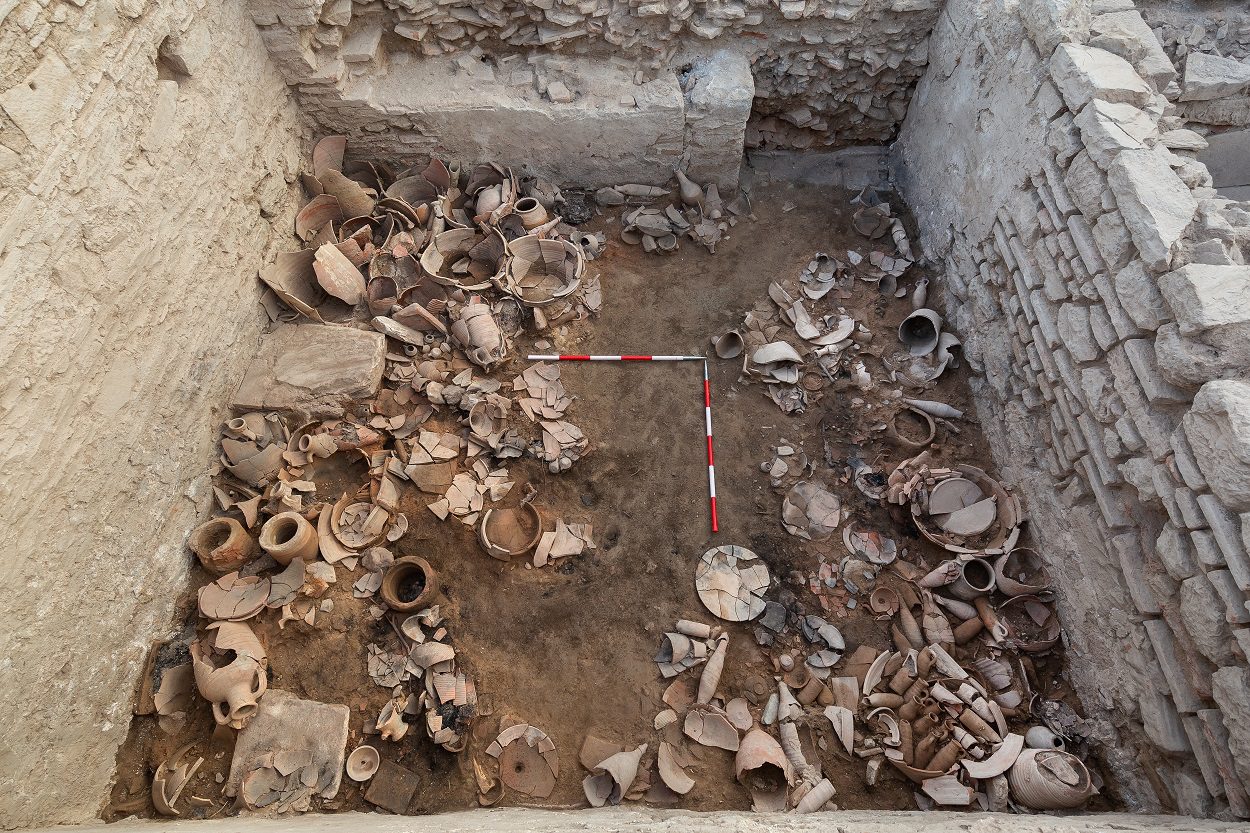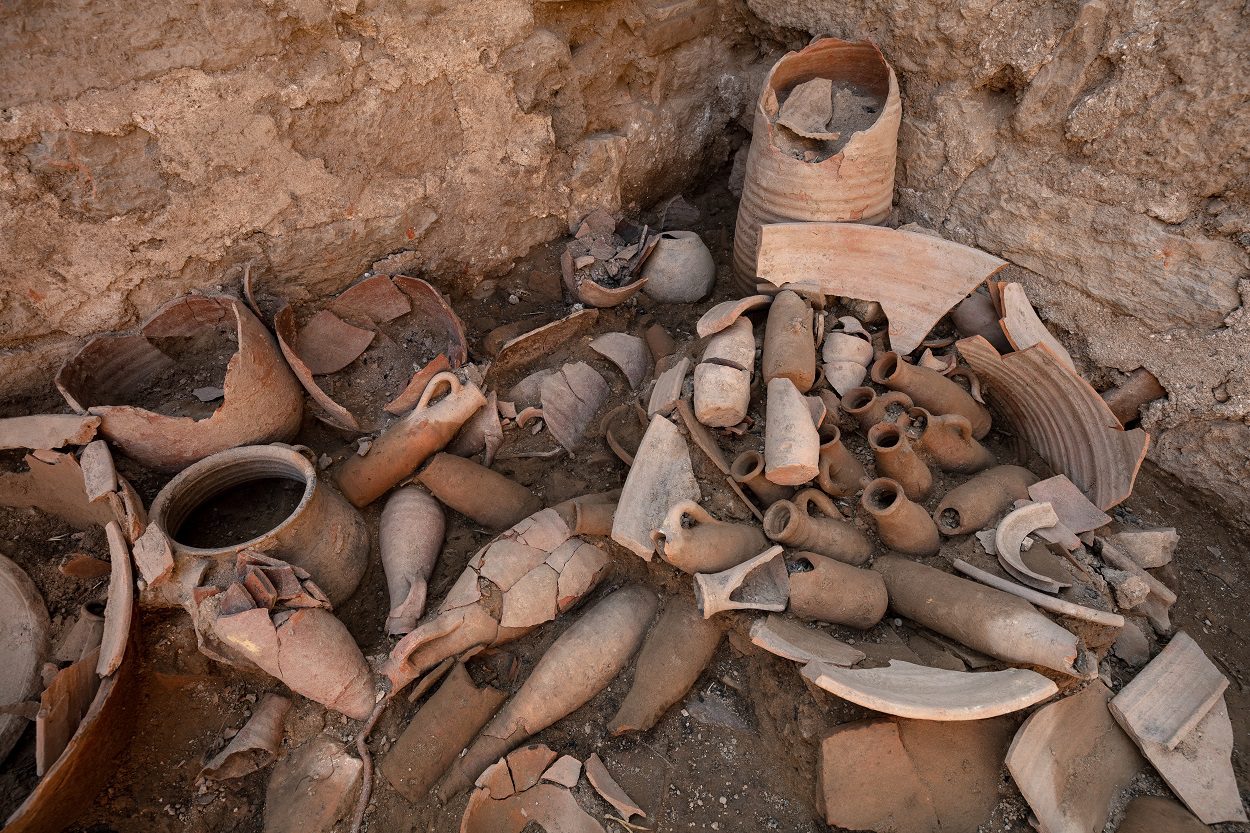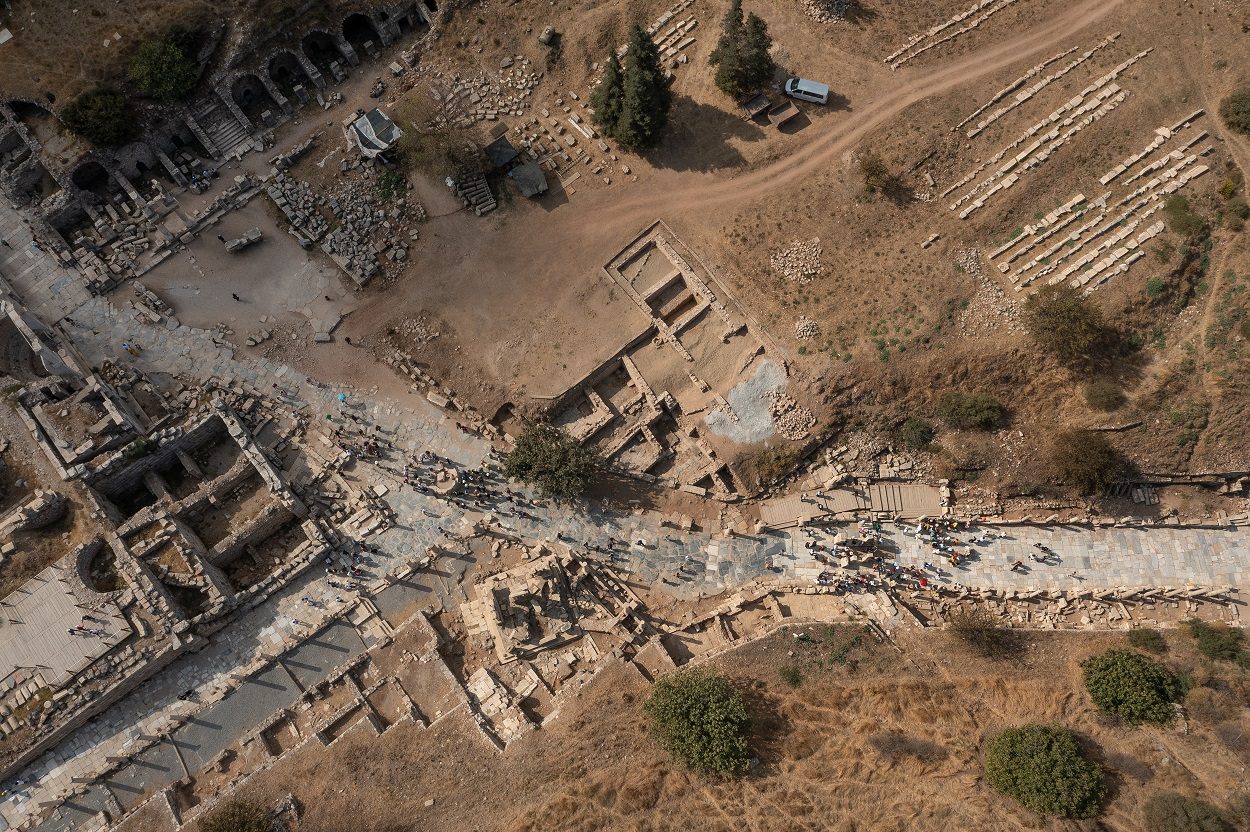Archaeologists from the Austrian Academy of Sciences have uncovered an early Byzantine business and gastronomy district at ancient Ephesos, located in the İzmir Province of Turkey.
Ephesos was built in the 10th century BC on the site of the former Arzawan capital by Attic and Ionian Greek colonists.
During the Classical Greek era, it was one of twelve cities that were members of the Ionian League, emerging as a major urban centre with monumental buildings that included the Library of Celsus and a theatre capable of holding 24,000 spectators. The city was also famous as a sacred place for pilgrims visiting the nearby Temple of Artemis, which has been designated one of the Seven Wonders of the Ancient World.
Ephesus, as part of the kingdom of Pergamon, became a subject of the Roman Republic in 129 BC after the revolt of Eumenes III was suppressed. During the 1st century BC, the city entered an era of prosperity under Roman rule, becoming both the seat of the governor and a major centre of commerce. According to the Greek philosopher and historian, Strabo, it was second in importance and size only to Rome.

During recent excavations, archaeologists have discovered an early Byzantine business and gastronomy district on Domitian’s Square, a prominent public place directly adjacent to the political centre of the Roman city, the Upper Agora.
Byzantine shops and workshops were built over a large Roman square complex, with the team focusing excavations on a structure consisting of several business premises that covers an area of around 170 square metres. Archaeological evidence indicates that the area was suddenly destroyed in AD 614/615 (as indicated by coins found in situ) preserving the remains beneath a thick burnt layer.
Individual rooms are preserved up to 3.4 metres high, containing thousands of pieces of ceramics, including whole bowls with the remains of seafood such as cockles or oysters, as well as amphorae filled with salted mackerel. Also found were stones from peaches, almonds and olives, and also charred peas and legumes. The team also uncovered four gold coins (solidi), in addition to over 700 copper coins.

Archaeologists suggest that the excavated rooms functioned as a cookshop, a storeroom, a workshop, a taberna, and a shop for lamps and pilgrim souvenirs (indicated by the discovery of around 600 small pilgrim bottles that were sold to Christian pilgrims).
The destruction layer is likely the result of conflict, with several arrowheads and spearheads also being excavated that the team links to the Byzantine–Sasanian War of AD 602–628, a series of wars fought between the Byzantine Empire and the Sasanian Empire of Iran that left both empires crippled.
Header Image Credit : OeAW-OeAI/Niki Gail





